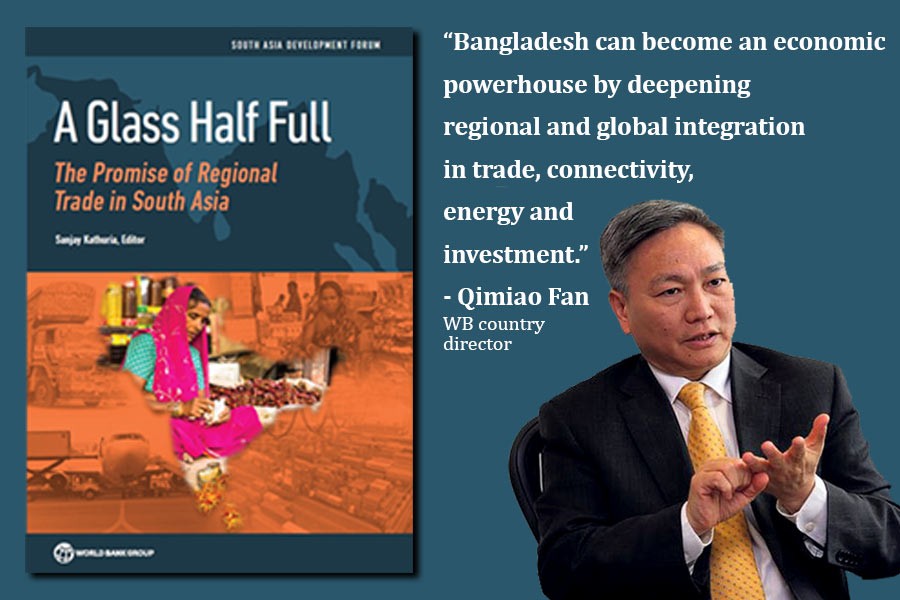Bangladesh can double its trade with South Asian countries by reducing tariff and non-tariff barriers, the World Bank says in a new report.
The WB launched the report, A Glass Half Full: The Promise of Regional Trade in South Asia, in Dhaka on Wednesday, reports bdnews24.com. Finance Minister Abul Maal Abdul Muhith was present at the launching ceremony.
The report said increased regional trade can accelerate Bangladesh’s growth and create more jobs for men and women.
“Bangladesh can become an economic powerhouse by deepening regional and global integration in trade, connectivity, energy and investment,” said Qimiao Fan, World Bank country director for Bangladesh, Bhutan, and Nepal while addressing the ceremony.
“For increased regional trade, the country needs to focus on improving its trade policy regime, which currently has a strong anti-export bias,” the WB country director said.
The report documents the gap between current and potential trade in South Asia and provides a roadmap for deepening regional trade.
It identifies four critical barriers to regional trade: tariffs and para-tariffs, real and perceived nontariff barriers, connectivity costs and a broader trust deficit.
According to the report, intraregional trade in South Asia remains one of the lowest in the world and accounts for about 5 percent of region’s total trade, compared with 50 per cent in East Asia and the Pacific. Bangladesh’s trade with South Asia is only 9 per cent of its global trade.
The costs of trade are much higher within South Asia compared with other regions: the average tariff in South Asia is more than double the world average, the report said.
South Asian countries have greater protection for imports from within the region than from the rest of the world.
Countries impose high para-tariffs, and more than one-third of the intraregional trade falls under sensitive lists, comprising goods not included under South Asia Free Trade Area or SAFTA’s tariff liberalisation.
The report found that in the case of Bangladesh, nearly 46 per cent of its imports from South Asia fall under sensitive lists.
Countries are yet to reap the benefit of shared land borders. This arises from deficiencies in border regimes, including limited information flows on nontariff measures, and inadequate use of modern clearance procedures.
Limited air connectivity makes regional trade and investment costlier, according to the report.
“Trust between countries is in short supply in South Asia. Border haats between Bangladesh and India, aimed at recapturing the once thriving economic and cultural relationships are now changing cross-border relations,” said Sanjay Kathuria, World Bank lead economist and lead author of the report.
“Haats are not just about trade. They are about using trade to foster people-to-people connect and trust.
South Asian policy makers can aim to reinforce the virtuous circle between trade and trust. The experience of Bangladesh India border haats offer several useful insights in this context.”
The report recommends targeting sensitive lists and para-tariffs to enable real progress on SAFTA and calls for a multi-pronged effort towards addressing non-tariff barriers, focusing on information flows, procedures, and infrastructure.
It also suggests that policy makers draw lessons from the India-Sri Lanka air services liberalisation experience, where liberalisation was gradual and incremental, but policy persistence paid off.
“Connectivity is another key enabler for robust regional cooperation in South Asia.”


